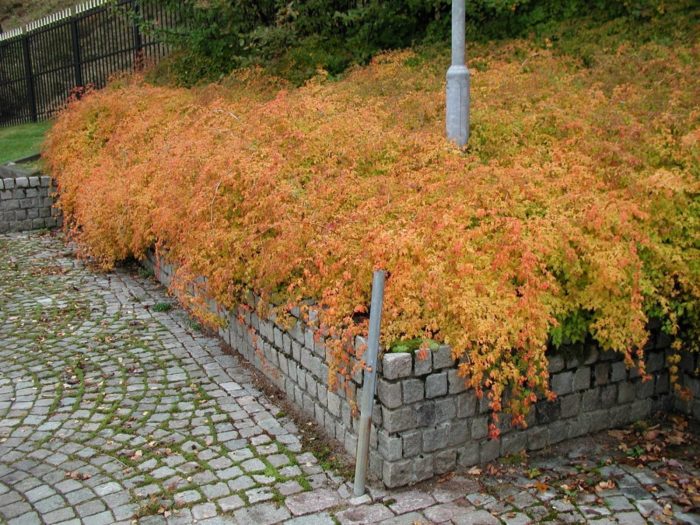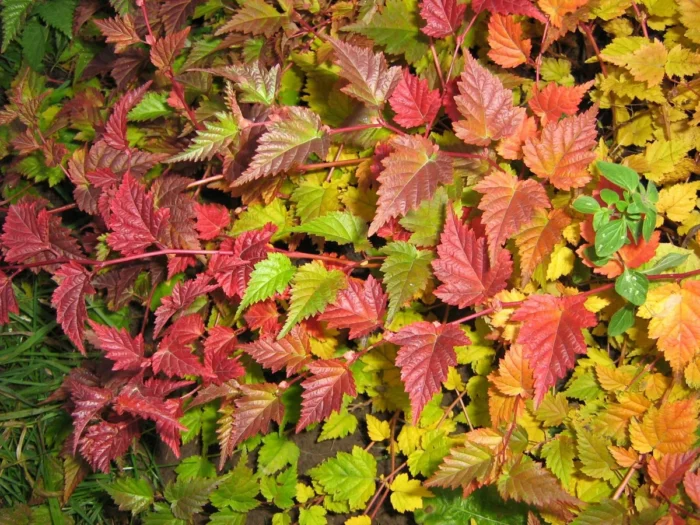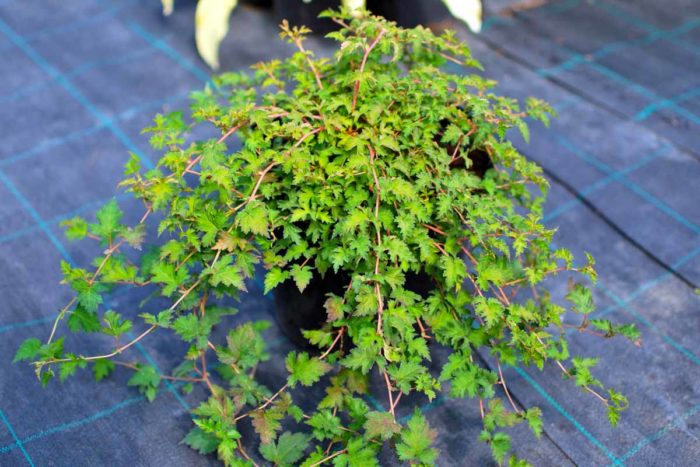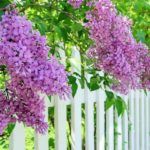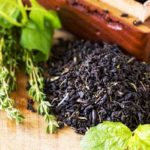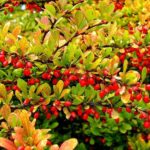A beautiful green shrub called stephanandra variety incised - blooms in summer, has a spreading form and does not require special care. The blooming bush covers the soil well. The plant has graceful, arching, shiny brown branches and distinctive leaf colors. Let's look at what kind of plant this is, the features of its planting and care, and where gardeners use it.
What kind of plant is this
Plant genus Stephanandra belongs to the family Rosaceae - Pink. There are currently sixteen species in this genus.Previously there were 11 of them, but at the beginning of this century several more species were added to them, having discovered that the plants were practically the same morphologically. The name “Stephanandra” itself comes from the Greek “Stephanos” and “Andros” - which are literally translated as “crown” and “flower”.
The main habitat of the incised leaf is Indonesia, Nepal, China and Japan. Stephanandra incisifolia, both wild and introduced, can be found in forests, rocky areas and mountains of Europe and North America. This species is cultivated mainly as an ornamental plant.
Morphological description of the stephanandra plant:
- The height of the bushes is up to 3-4 meters. It has bare or slightly pubescent, angular in cross-section or rounded shoots. Widely spreading shoots sometimes droop and take root at the ends.
- Most often, two-row leaves have lush stipules. The perennial has leaves: serrate-lobed, single, often with widened long ends, green, changing color in autumn.
- The flowers have a small diameter of up to 5 millimeters, they are collected in apical inflorescences - corymbs, racemes and paniculates. Typically, the cupped underside is bare or hairy. The calyx has five elliptical or triangular shaped sections. The five petals of the crown are ovoid in shape and have a white or, less commonly, pink color. There are up to thirty stamens, but on average ten. Most often, from one to five fruiting bodies form the ovary and include up to ten ovules.
- The leaflet (fruit) includes ovoid seeds.
The variety Stephanandra incisifolia is most often found in the wild of these countries: Japan, Taiwan, Indonesia and Korea. But at the same time, it takes root well when introduced into the territory of other countries, including Russia.
Landing Features
The shrub thrives in well-drained soil and moist conditions. At the same time, stephanandra in central Russia is best planted in open sun, and in the south of the country - in semi-shaded areas. The plant prefers a cool, temperate climate in which the ground remains moist and the soil is fertile. But at the same time, stephanandra also grows on not particularly fertile soil, the main condition being good drainage. The plant does not like dry areas.
Even though the shrub does not particularly like winter, having moderate resistance to frost, stephanandra is capable of easy and quick recovery. To preserve the plant, it is advisable to cover it with dry leaves or peat. And with the onset of spring, the root collar of the incised leaf requires release.
This shrub is intended for single planting. It is planted on retaining walls and in decorative compositions. It blooms well in the open sun, but especially loves semi-shaded areas, in which stephanandra shelters from the piercing wind.
Before planting flower beds, you need to take into account the size of the bush and leave the required distance between each bush. In favorable conditions, the plant grows by 1.5-2 meters. It is best to start planting Stefanandra in the spring months. Then the plant will have enough time to take down strong roots and prepare for winter.
To replant this shrub, you need to prepare fresh, nutritious soil; sandy loam-drained soil is best suited for this. Here is an example of the optimal soil composition for cut-leaved soil: leaf humus, peat compost and sand. The ratio of these components should be 2:1:1.When you plan to plant shrubs on heavy clay soil, it is imperative to prepare a drainage layer of at least 15 centimeters.
Aftercare
The shrub is not particularly demanding, does not require special care and, in favorable conditions, is not susceptible to pests. At the same time, in order for the plant to take root and feel good in the future, you need to pay some attention to it in the year of planting. All care consists of fertilizing the cut-leaved plant with compost from time to time. In a favorable place, Stefanandra lives up to twenty years or more. A well-rooted plant easily survives wintering under a layer of snow.
The shrub needs to be watered regularly, ideally every other day. The calculation of water for each bush is two buckets. It is necessary to weed out the weeds and loosen the surface layer of the earth, covering it with mulch from peat and wood chips. This allows you to retain the amount of moisture necessary for the growth of the shrub, and also provides Stefanandra with protection from weeds.
To strengthen the growth of the plant and saturate it with the necessary microelements, after a calendar year - in early spring, even before the leaves appear, it is necessary to prepare a special nutrient solution and water the perennial shrub with it. The solution consists of the following components:
- 10 liters of water;
- 1 kilogram of half-decomposed mullein;
- 15 grams of ammonium nitrate - ammonium nitrate;
- 10 grams of urea.
On average, a plant over ten years old will require an average of 12 liters of this mixture.
To give the crown of the plant a decorative appearance and improve its growth and formation, you need to trim the bush in a timely manner in the spring months. This consists of ridding the plant of old, diseased and dried out branches.Also, pruning is a way of rejuvenating an old bush - for this it is cut close to the ground. The process is carried out after flowering, but the plant can be pruned in the last days of winter. There is no particular difficulty in pruning this unpretentious plant.
The main thing to consider is that Stefanandra begins flowering on shoots that are two years old. Stephanandra incisifolia also needs pruning when it is necessary to stop excessive growth of the soil cover. In this case, the shoots are shortened on the interfering side. Sometimes cut shoots are used by gardeners for propagation by cuttings.
Before the onset of winter, instead of fertilizers, it is enough to spread a small amount of compost at the base of the bush. This will also nourish and strengthen the plant, preparing it for winter frosts.
Pest Control
A characteristic feature of stephanandra incisifolia is its resistance to diseases and pests of various types. To enhance the natural characteristics of a perennial plant, it is advisable to regularly carry out preventive maintenance using complex mineral fertilizers in spring - April. Even though this perennial plant comes from Southeast Asia, it also feels quite good in the Russian climate. Thus, in the regions of Russia, stephanandra is also not particularly susceptible to disease and does not attract harmful insects.
At the same time, when the summer is particularly wet and cool, the plant is sometimes affected by rust or powdery mildew. To avoid this, in the spring the perennial is sprayed with Bordeaux mixture - a special raster of copper sulfate in lime milk.
Application
The stephanandra incisifolia plant is valued by gardeners for its decorative appearance.It is actively used to create complex compositions, and is also planted in groups on lawns in country gardens. The showy perennial attracts the attention of passersby and beautifully complements conifers and other evergreen shrubs. As a background, the perennial is used for planting in large areas and flower beds in rural and country cottages.
The green crown of stephanandra forms a harmonious openwork carpet if planted under a tree with light leaves - maple, willow, linden. The plant goes well with other types of shrubs. It is necessary to give the cut-leaved plant enough space for growth and it remains to supplement the decorative composition with those plants (ram, deutzia and others) that will strengthen the stephanandra without entering into competition with it.

